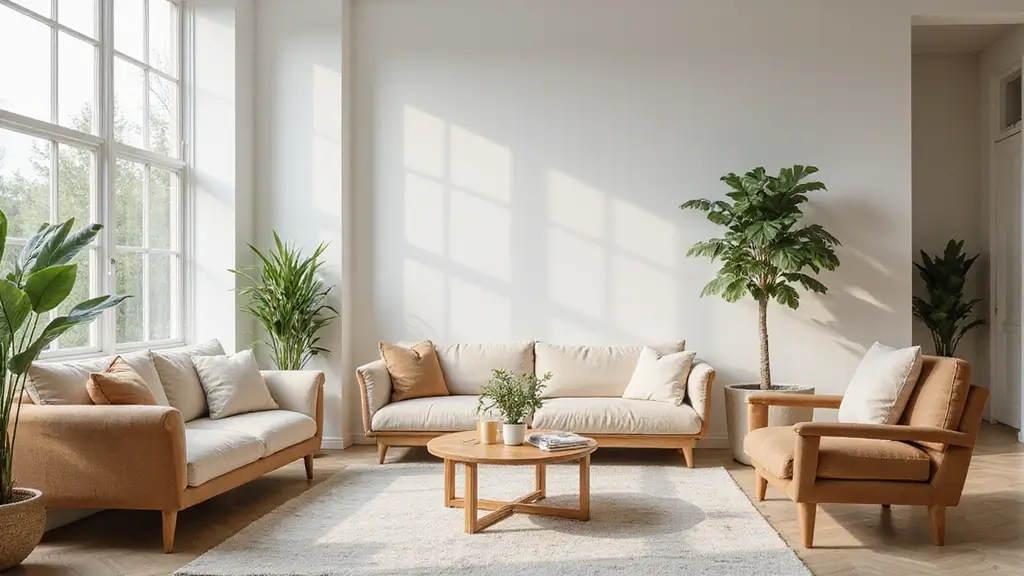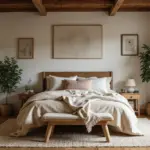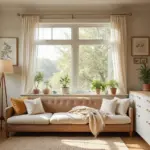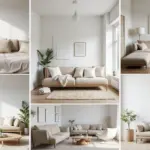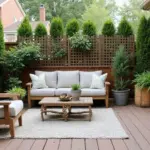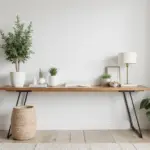Less is more! Embracing minimalism in interior decor can transform your space into a serene oasis.
This style emphasizes simplicity, functionality, and a clean aesthetic that fosters mindfulness and sustainability. By choosing quality over quantity, you not only create a harmonious environment but also reduce clutter and environmental impact. Explore these 30 minimalist interior decor ideas that blend sustainable practices with modern design, ensuring your home is not just beautiful, but also kind to the planet. From furniture choices to decor accents, each idea encourages you to think critically about your space while keeping it stylish.
Ready to revamp your home? Let’s dive into these inspiring minimalist ideas!
1. Choose a Neutral Color Palette
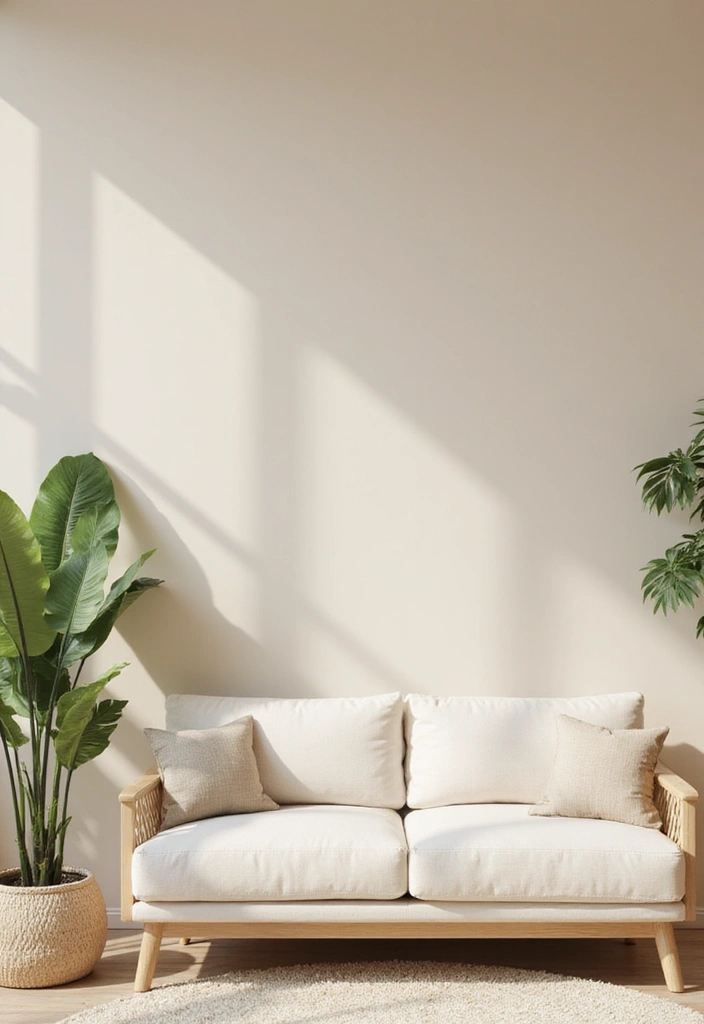
A neutral color palette is the backbone of any minimalist home design. Shades of white, beige, gray, and soft pastels create a calm backdrop that enhances natural light.
This approach allows you to add layers and textures without overwhelming the senses. Here are some tips to effectively use a neutral palette:
– Select a primary color: Choose one main color and stick to a few complementary shades.
– Mix materials: Wood, metal, and soft fabrics create balance while maintaining simplicity.
– Accent sparingly: Use bold colors in small doses, like a single artwork or a plant, to add depth without cluttering the space.
This minimalist strategy makes your rooms feel larger and more inviting, fostering a sense of peace and tranquility throughout your home.
2. Invest in Quality Furniture
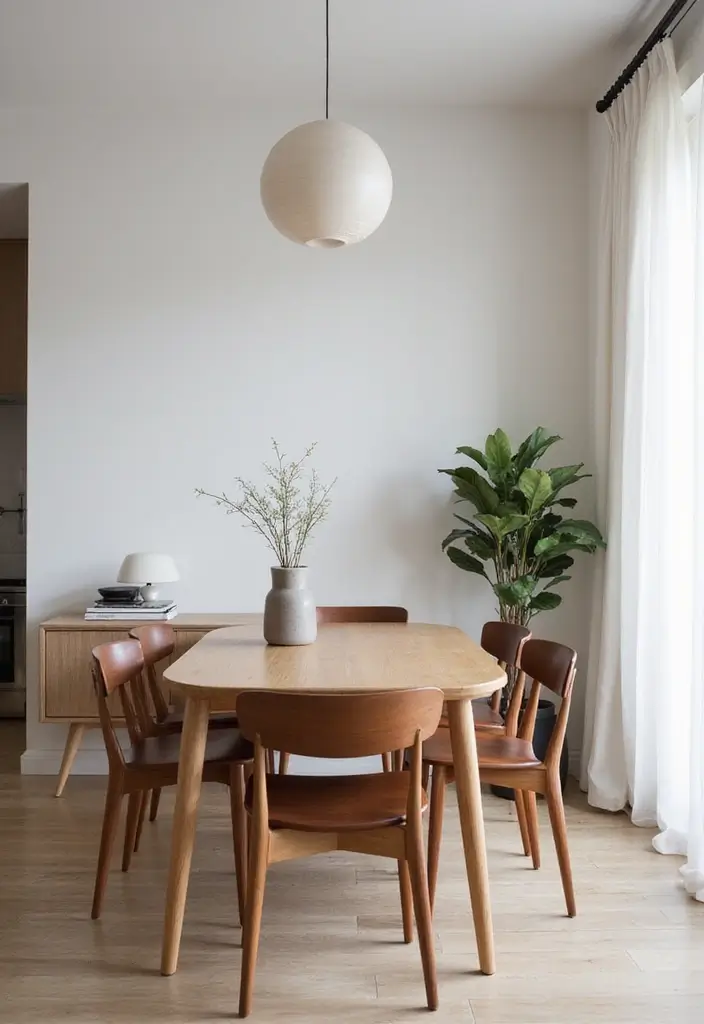
Minimalism doesn’t mean sacrificing comfort for simplicity. Investing in quality furniture is crucial for creating a sustainable minimalist interior.
Look for pieces that not only serve a purpose but also add aesthetic value to your space. Here are some guiding points:
– Functionality first: Choose furniture that serves multiple purposes, such as a sofa bed or storage ottoman.
– Timeless design: Select classic styles that won’t go out of fashion, ensuring longevity in your investment.
– Eco-friendly materials: Opt for sustainably sourced wood or recycled materials that minimize environmental impact.
By selecting fewer, high-quality items, you create a curated look that reflects your personality while promoting sustainability.
3. Simplify Your Decor
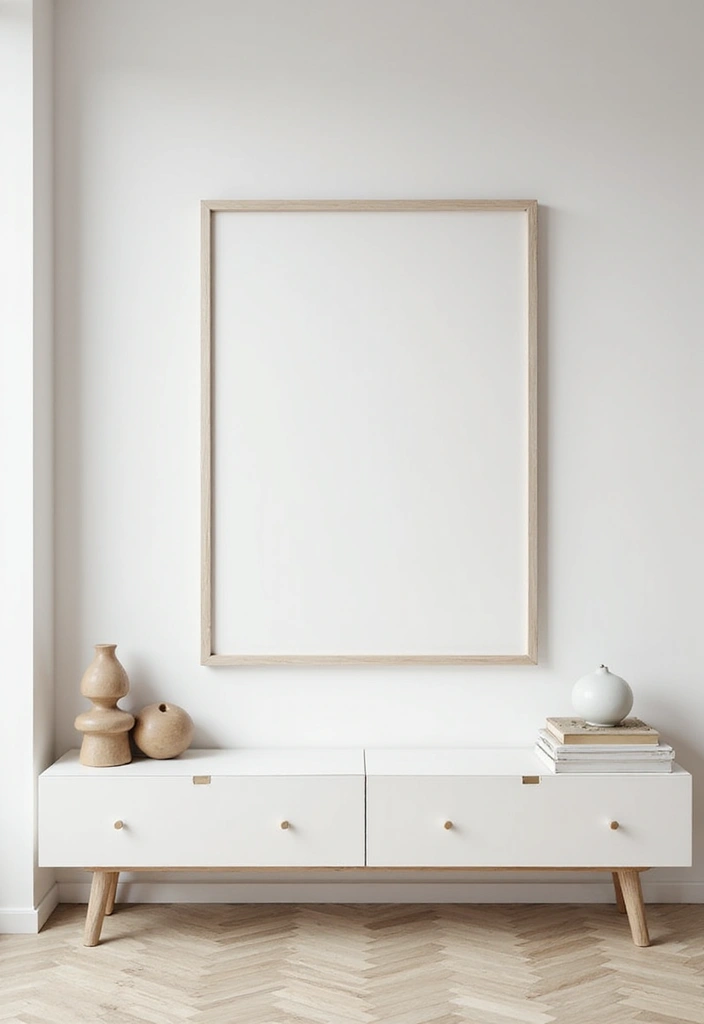
When it comes to minimalist decor, less truly is more. Simplifying your decor means choosing fewer items that make a bold statement rather than cluttering your space with small trinkets.
Here’s how to simplify effectively:
– Focus on one statement piece: This could be an oversized artwork or a large sculpture that captures attention.
– Limit accessories: Choose 3-5 decorative items per room, ensuring they each add value and visual interest.
– Embrace open spaces: Leave areas empty to enhance the sense of space and promote a feeling of calm.
The result? A serene environment that inspires relaxation and mindfulness.
4. Use Natural Light Effectively
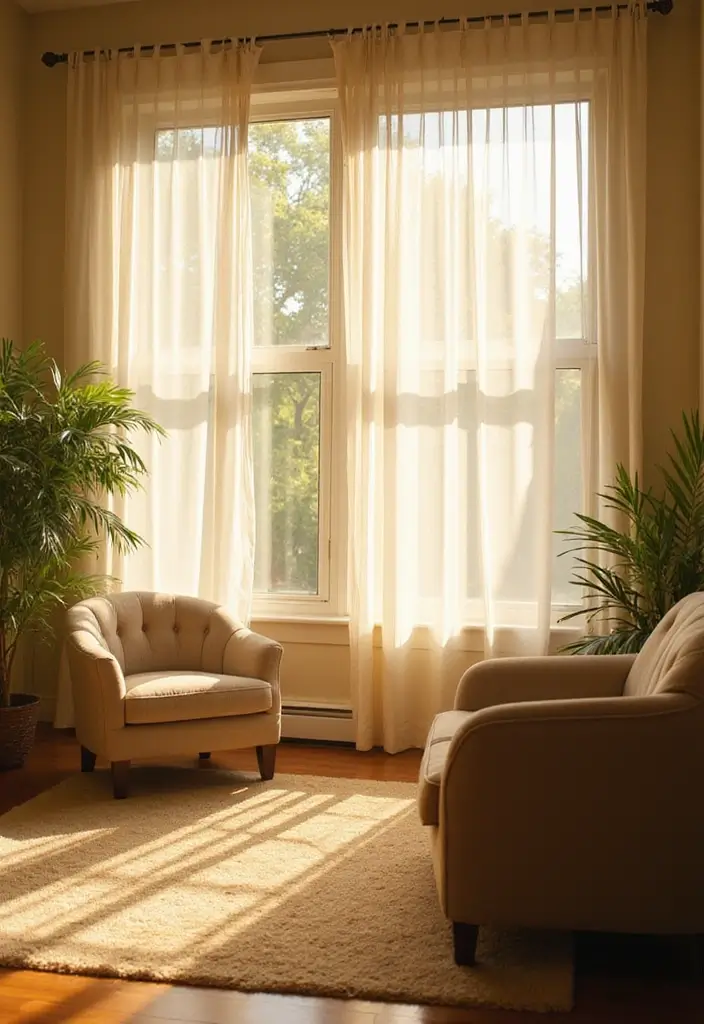
Harnessing natural light can elevate minimalist interior decor, bringing warmth and vibrancy into your home.
Effective use of light enhances textures and colors while creating an inviting atmosphere. Here are some suggestions on using natural light:
– Maximize window space: Choose sheer curtains or no window coverings to let light flow freely.
– Reflective surfaces: Use mirrors strategically to bounce light around the room, making space feel larger and brighter.
– Light color schemes: Light-colored walls and furniture help to reflect light rather than absorb it.
With these ideas, your home can feel more open and connected with nature, promoting a serene ambiance.
Let the light in! Embracing natural light not only brightens your space but also creates a warm and inviting atmosphere—perfect for showcasing your minimalist interior decor.
5. Incorporate Greenery
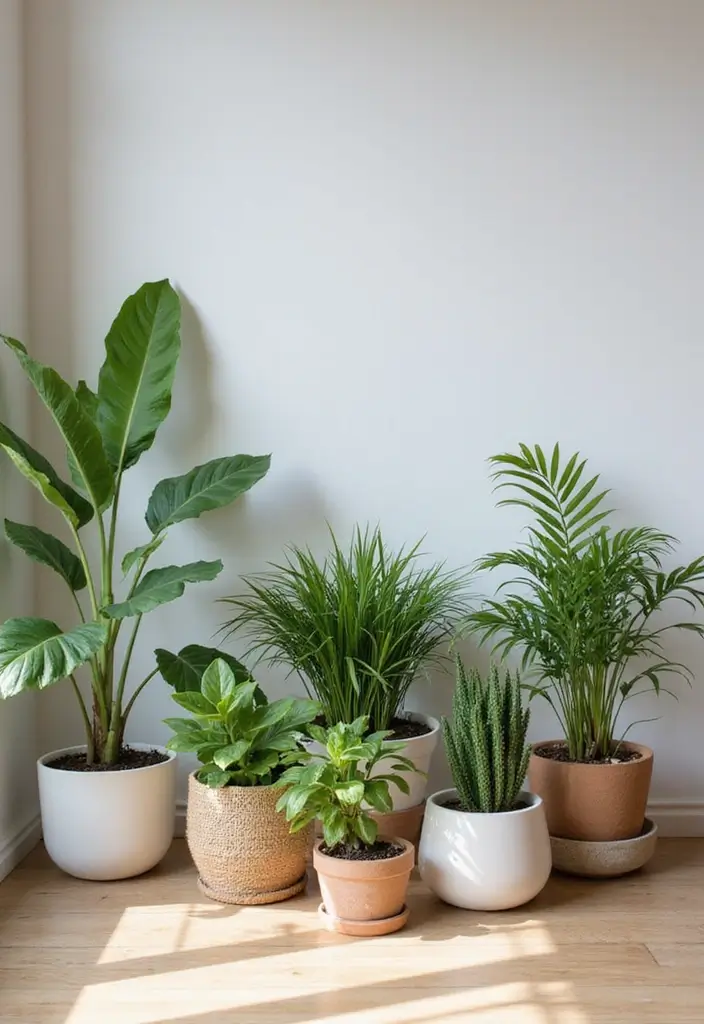
Bringing plants into your minimalist decor not only adds a splash of color but also improves air quality.
Plants are a perfect way to add life to your home while sticking to sustainable practices. Consider these tips when incorporating greenery:
– Choose low-maintenance plants: Look for succulents or snake plants that thrive with minimal care.
– Cluster plants: Grouping plants together can create a focal point without overcrowding the space.
– Use stylish pots: Opt for sleek, modern pots that match your decor, enhancing that minimalist vibe.
Plants can be a beautiful addition, creating a calming environment that promotes well-being.
6. Embrace Open Floor Plans
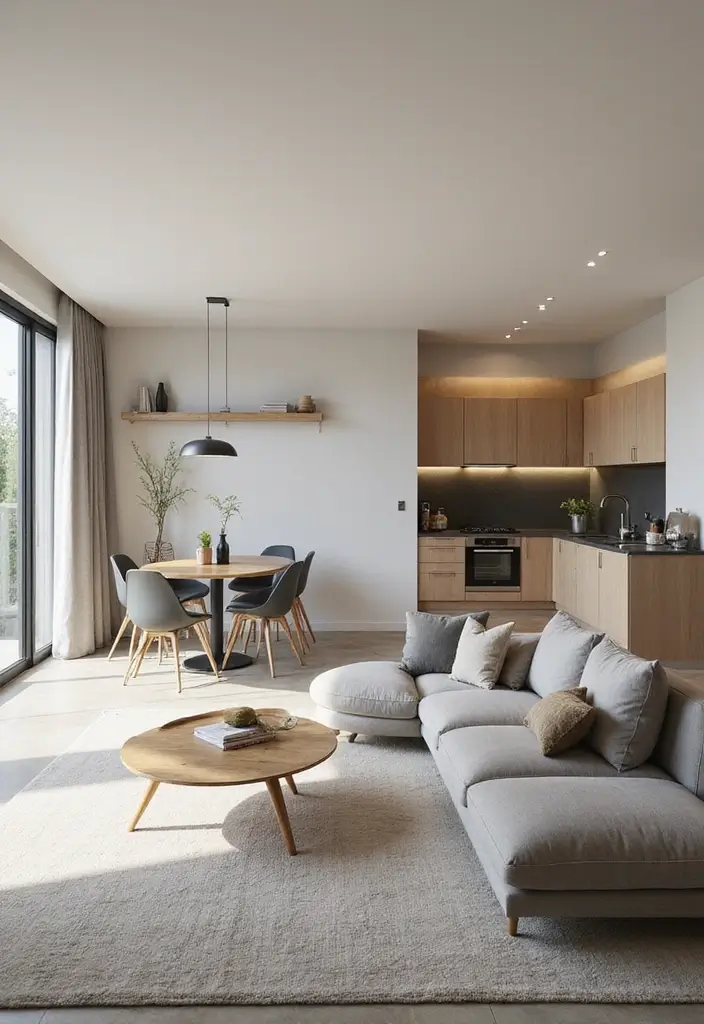
Open floor plans are a hallmark of minimalist home design, promoting a flow between spaces that enhances functionality and comfort.
This approach allows you to create a cohesive look throughout your home. Here are some benefits of open floor plans:
– Enhanced natural light: Fewer walls mean more light can travel freely through the space.
– Flexibility in design: You can adapt spaces for different purposes, such as combining the kitchen and living area.
– Simplified furnishings: Open spaces encourage fewer, larger pieces, minimizing clutter.
Adopting an open layout can make your home feel larger and more connected, creating a sense of unity.
7. Focus on Functionality
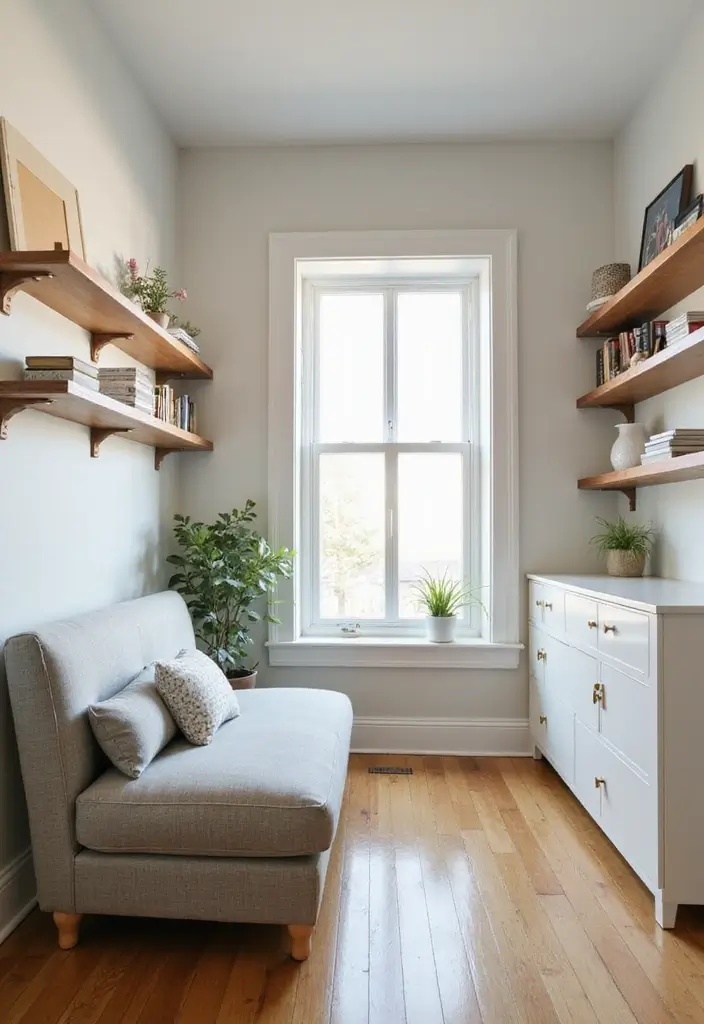
In minimalist interior decor, functionality reigns supreme. Every item in your home should serve a purpose, ensuring that everything has its place.
Here’s how to prioritize functionality:
– Identify needs: Analyze your daily routines to determine what items are essential.
– Smart storage solutions: Use built-in shelves, under-bed storage, and multifunctional furniture to keep clutter at bay.
– Rethink layouts: Arrange furniture to enhance flow and accessibility, ensuring that movement around the space feels natural.
By focusing on functionality, you create not just a beautiful space but a livable one.
8. Choose Sustainable Materials
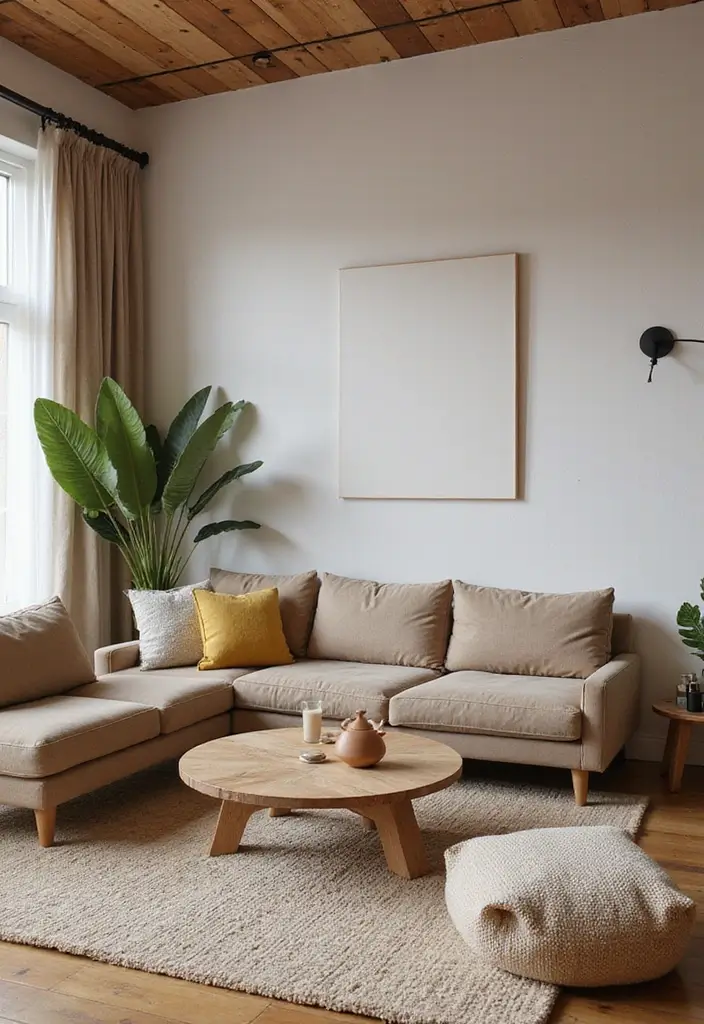
Sustainability is at the heart of modern decor inspiration, especially when it comes to material choices. Opting for eco-friendly materials ensures that your decor not only looks good but also feels good.
Here are key sustainable materials to consider:
– Bamboo: This fast-growing plant is sturdy, stylish, and eco-friendly.
– Reclaimed wood: Perfect for adding character and history to your design while promoting recycling.
– Organic fabrics: Look for cotton, linen, or hemp for upholstery and curtains to minimize chemical exposure.
Choosing sustainable materials contributes to a healthier planet while enhancing the beauty of your space.
9. Create Defined Zones
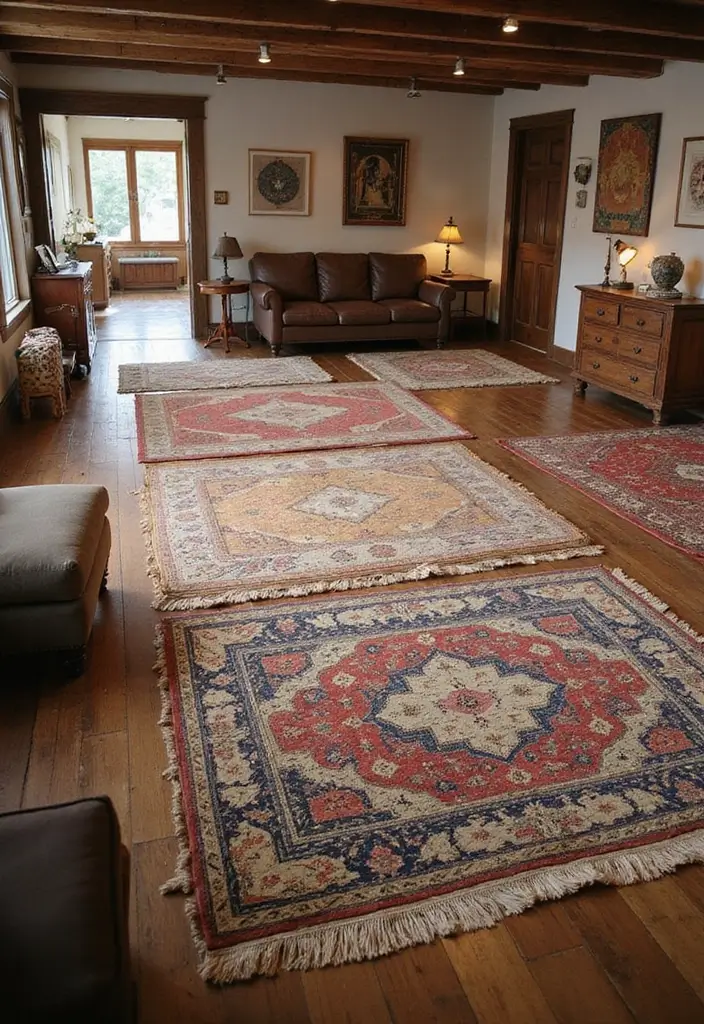
Even in an open space, defining zones can enhance functionality and aesthetic appeal. This concept works well in minimalist designs by keeping areas distinct while maintaining an overall harmony.
Consider these ideas to create defined zones:
– Use rugs: Area rugs can visually separate spaces, like a living area from a dining nook.
– Furniture arrangement: Position furniture to create boundaries; for instance, facing sofas towards each other.
– Lighting: Use different light fixtures to emphasize certain areas, like pendant lights over a dining table.
Clearly defined zones create a balance between openness and intimacy, making your home more livable.
10. Opt for Built-In Furniture
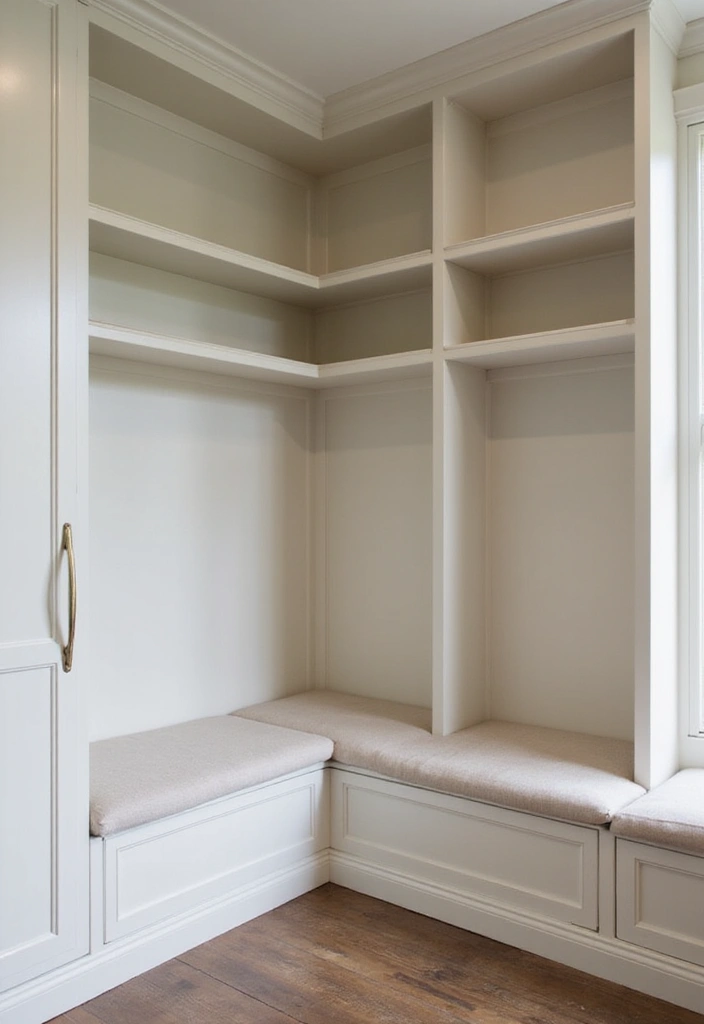
Built-in furniture is a great solution for maximizing space while keeping a clean aesthetic. By integrating furniture with your walls, you create a seamless look that embodies minimalist design principles.
Here’s why built-ins are beneficial:
– Maximized space: Built-ins use every inch of available space efficiently, providing ample storage.
– Customizable: They can be tailored to fit your style and needs, ensuring a perfect match with your decor.
– Reduced clutter: By storing items out of sight, built-ins keep your living areas free from distractions.
Incorporating built-in furniture can transform your home, enhancing its functionality while maintaining a streamlined look.
11. Use Multi-Functional Spaces
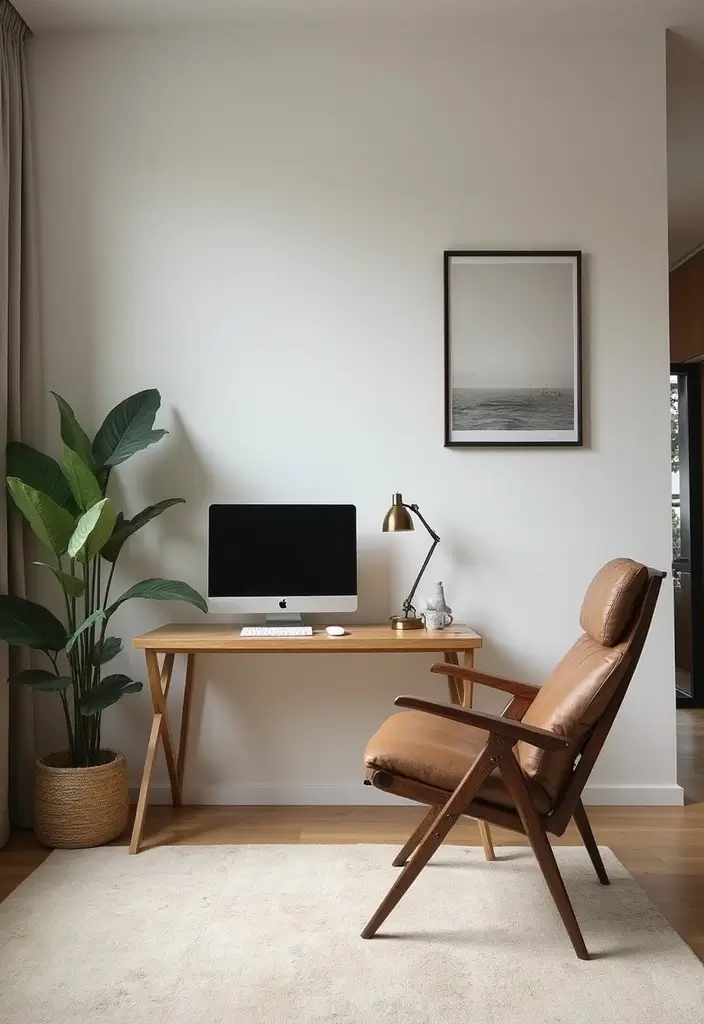
Multi-functional spaces are essential in a minimalist home, particularly if you’re working with limited square footage. These areas serve more than one purpose, enhancing the utility of your home.
Here are some ideas for creating multi-functional spaces:
– Home office nook: Use a corner of your living room as a work area with a compact desk.
– Convertible furniture: Invest in a Murphy bed or a folding table that can be stowed away when not in use.
– Shared areas: Design the living room to double as a play area, ensuring every inch is utilized.
These solutions promote an efficient lifestyle while maintaining a clean, minimalist aesthetic.
12. Limit Patterns and Textures
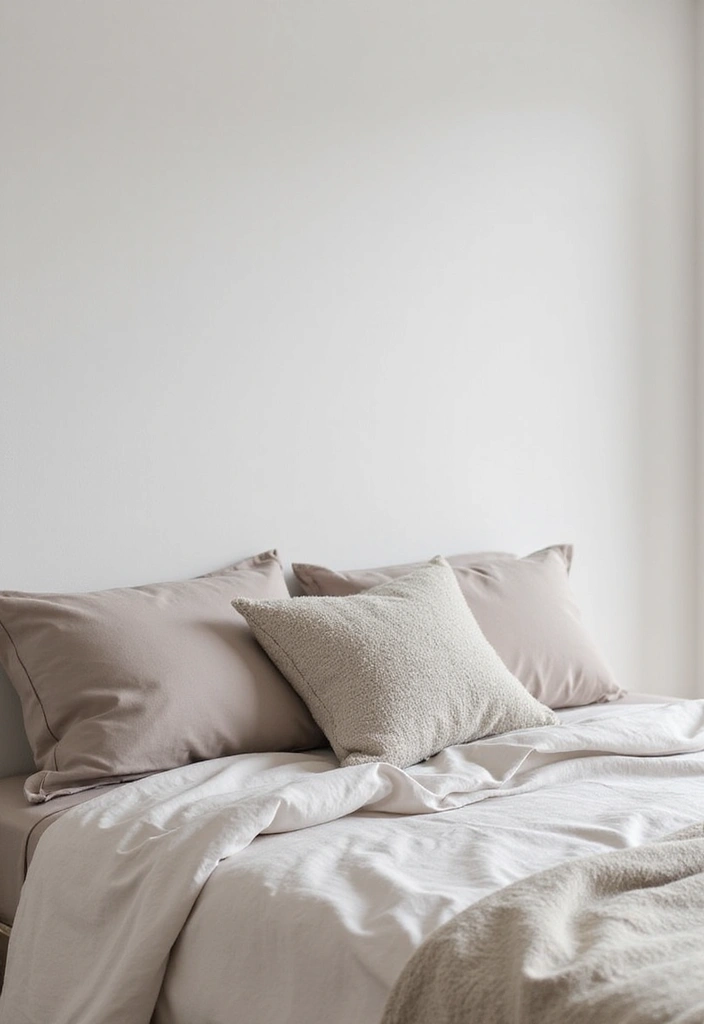
In minimalist interior decor, simplicity is key. Limiting patterns and textures can create a calming atmosphere conducive to relaxation.
Here’s how to achieve this:
– Choose solid colors: Stick to solid colors for larger furniture pieces to maintain unity.
– Incorporate subtle textures: Use varied but understated textures, like a woven fabric or a smooth surface, to add interest without being overwhelming.
– Keep patterns minimal: If you choose to include patterns, limit them to one or two and use them sparingly as accents.
This approach keeps your space feeling serene and uncluttered, promoting peace of mind.
13. Create a Focal Point
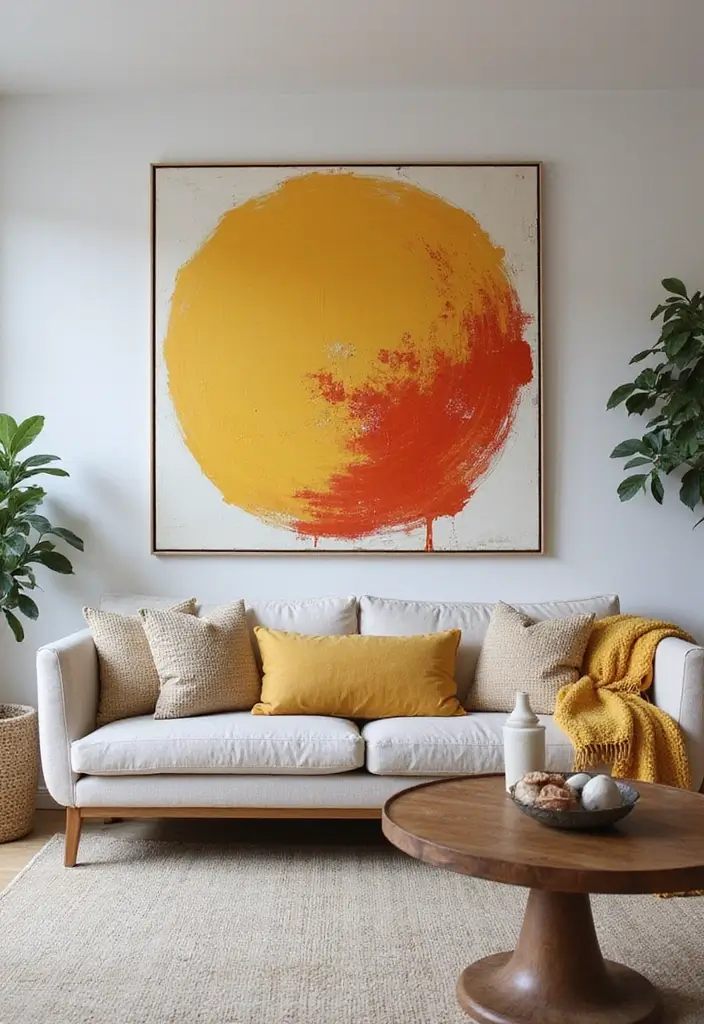
Every well-designed room benefits from a standout focal point. In minimalism, this could be a striking piece of art, a stunning piece of furniture, or a beautiful view from the window.
Here’s how to create effective focal points:
– Select a statement piece: Choose an artwork or sculpture that draws attention and serves as a conversation starter.
– Use lighting: Highlight your focal point with focused lighting or a unique fixture that enhances its visual impact.
– Surround thoughtfully: Maintain minimal decor around it to allow the focal point to shine without distractions.
A strong focal point can elevate your space, creating a sense of purpose and style.
14. Keep Accessories Simple
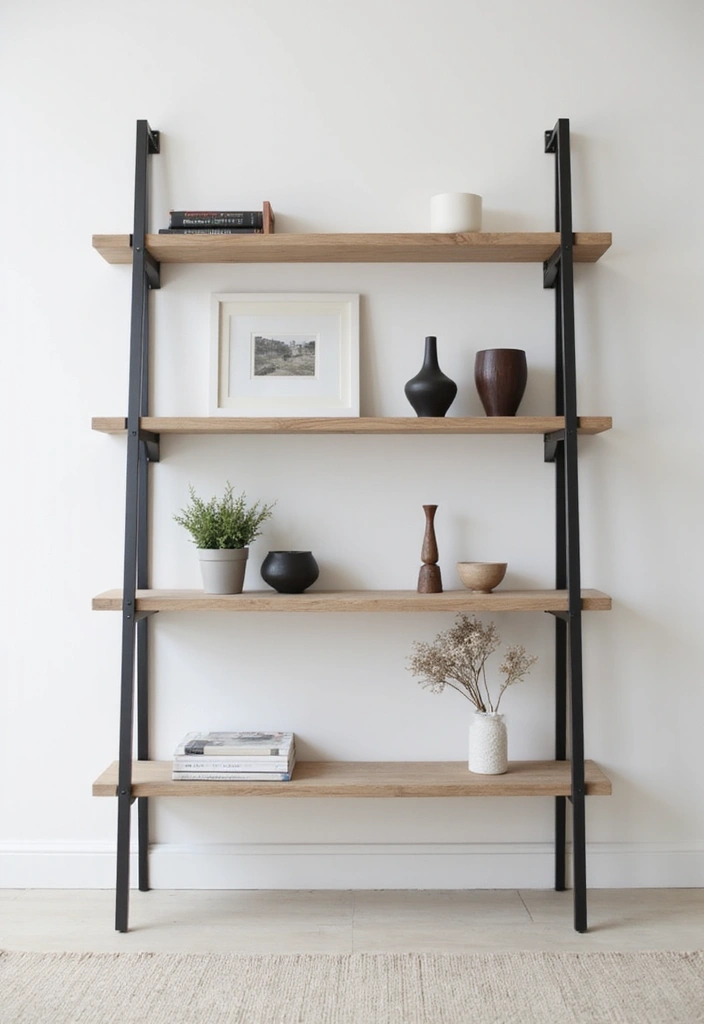
Accessories in a minimalist home should enhance the overall vibe without overwhelming it. Keeping things simple allows you to focus on quality rather than quantity.
for choosing accessories:
– Limit to essentials: Choose a few key pieces that complement your decor without cluttering the space.
– Opt for organic shapes: Accessories with soft, organic shapes can add a touch of warmth without being harsh.
– Use color thoughtfully: Incorporate accessories that match your color palette to maintain harmony.
Simple accessories can make a profound impact, adding character to your home while remaining true to minimalist principles.
In a world of excess, simplicity is the ultimate sophistication. Choose accessories that blend seamlessly into your minimalist interior decor, allowing quality and warmth to shine through.
15. Declutter Regularly
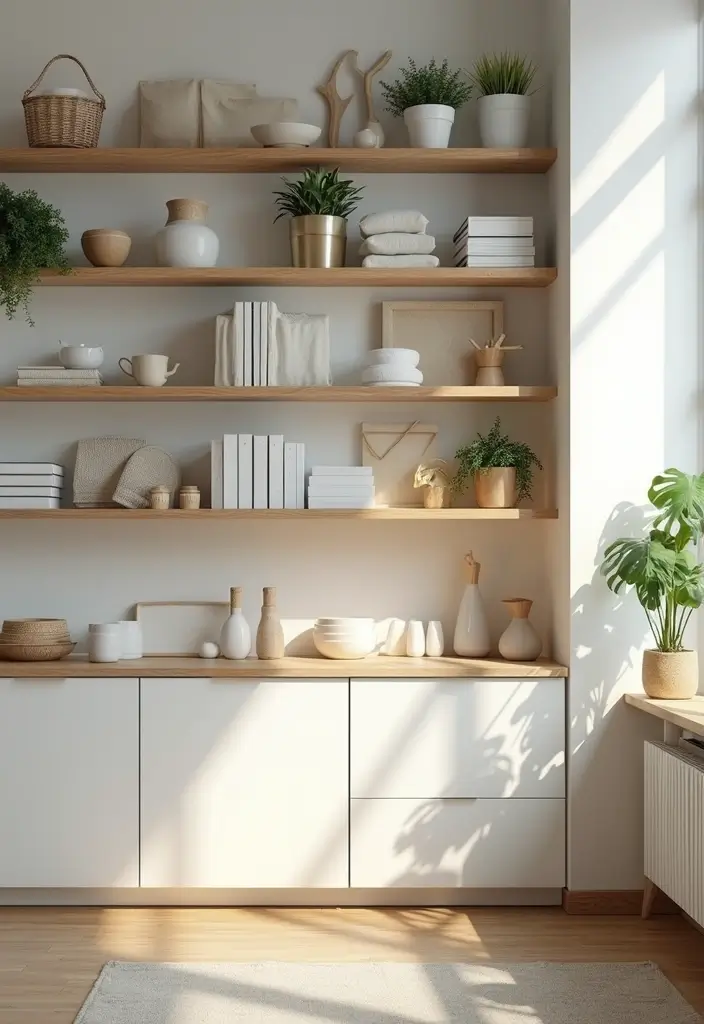
Maintaining a minimalist home requires a commitment to regular decluttering. This practice ensures that your space remains serene and functional.
Here’s how to declutter effectively:
– Set a schedule: Regularly assess your belongings and decide what to keep, donate, or discard.
– One in, one out: For every new item you bring into your home, consider letting go of an old one.
– Create designated spaces: Ensure that everything has its place, making it easier to keep your home organized.
Through consistent decluttering, you can preserve the tranquility that minimalism brings to your living environment.
16. Use Geometric Shapes
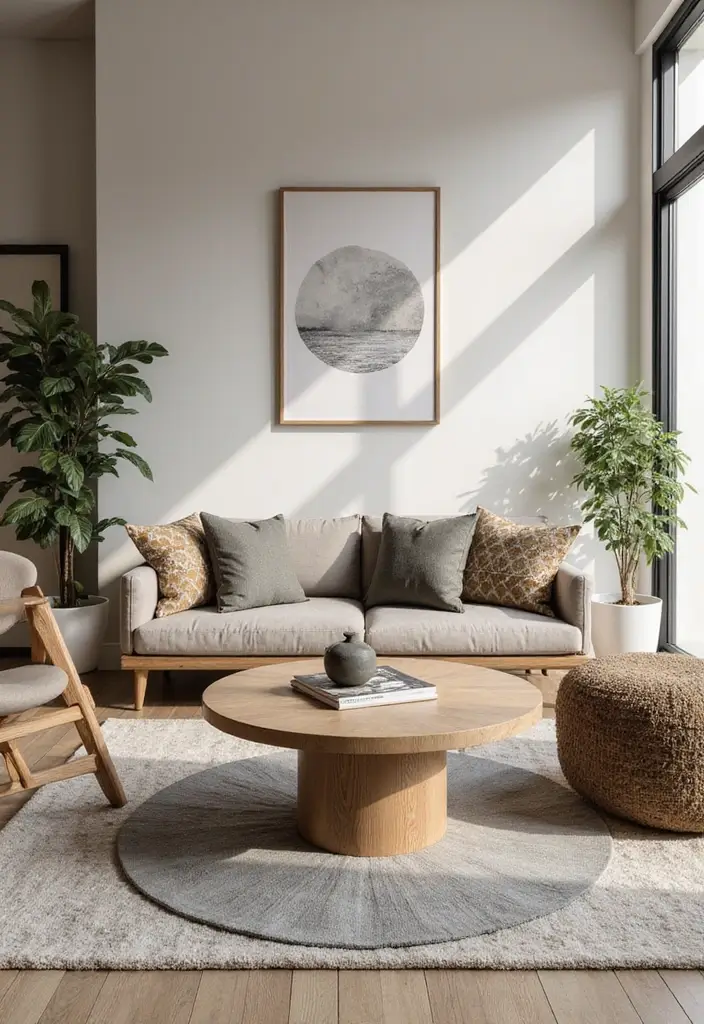
Incorporating geometric shapes can add visual interest to your minimalist decor while still keeping it simple and clean.
Here’s how to effectively use geometry:
– Choose furniture with clean lines: Look for pieces that feature geometric shapes, such as a round coffee table or angular bookshelves.
– Decorative accents: Incorporate geometric patterns in textiles, like pillows or rugs, to add a modern touch.
– Artistic displays: Hang geometric artwork or create wall features with shapes to enhance style without clutter.
These geometric elements can help create a modern, cohesive look in your home.
17. Maximize Vertical Space
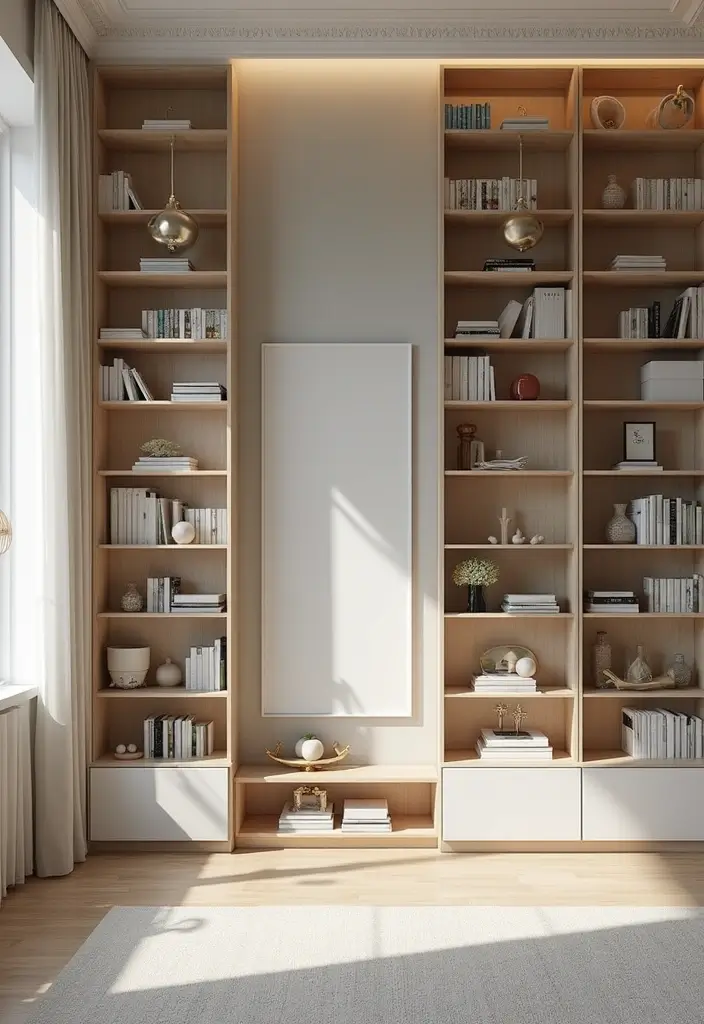
Maximizing vertical space is a smart strategy in a minimalist home, particularly if you want to create an illusion of height and openness.
Try these methods to utilize vertical space:
– Tall bookshelves: Install shelves that reach the ceiling to draw the eye upward while providing storage.
– Hanging decor: Use wall-mounted art or light fixtures to free up floor space and maintain a clean look.
– Vertical gardens: If you love plants, consider vertical planters that save space while enhancing decor.
Maximizing vertical space can transform your home, making it feel airier and more spacious.
18. Use Mirrors for Depth
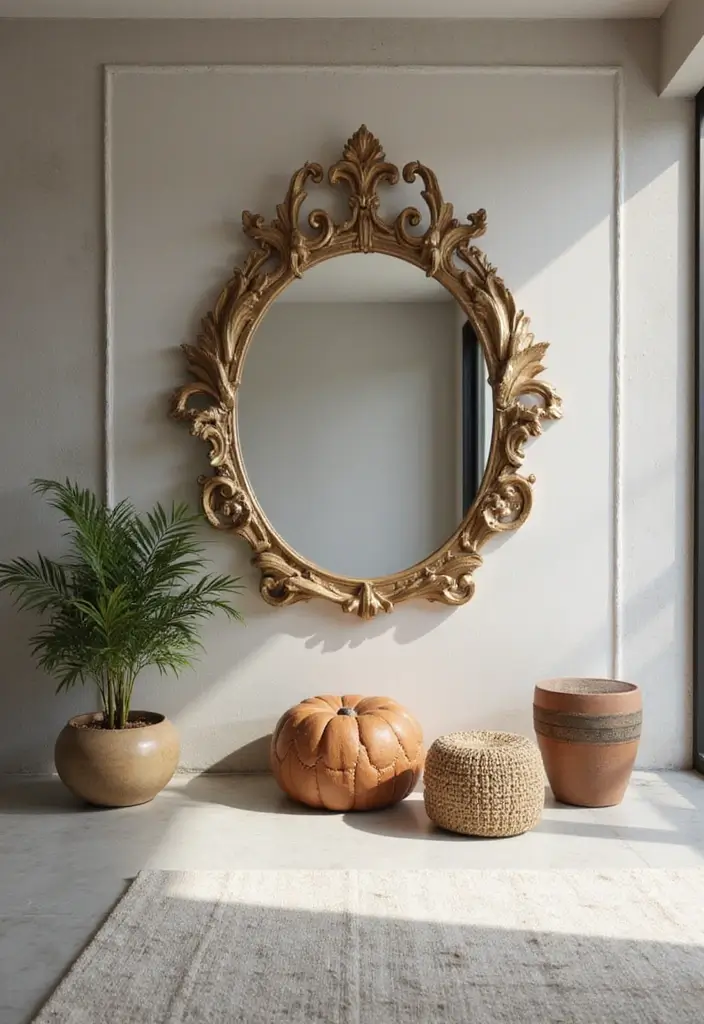
Mirrors are a fantastic tool in minimalist interior decor, adding depth and light to spaces.
Here’s how to effectively incorporate mirrors:
– Large mirrors: Use oversized mirrors to reflect light and create an illusion of space.
– Strategic placement: Position mirrors across from windows or light sources to maximize their effectiveness.
– Decorative mirrors: Choose unique frames that complement your style while enhancing the minimalist vibe.
With the right mirrors, your rooms can feel more expansive and inviting, reflecting the beauty of your decor.
19. Stick to Simple Patterns
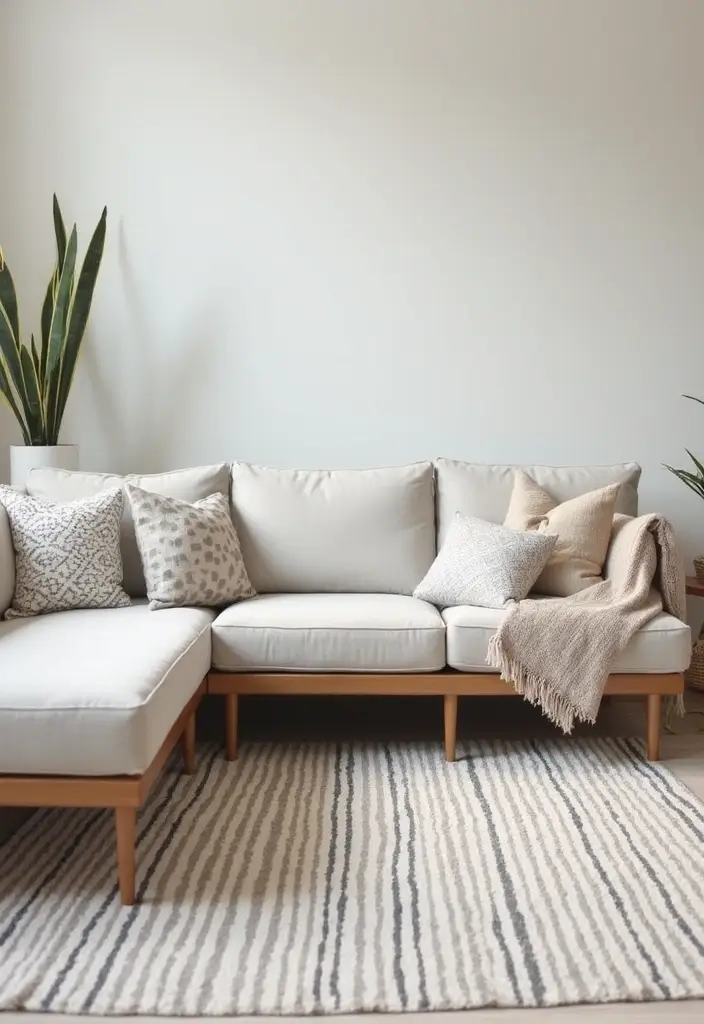
In a minimalist home, patterns should be understated yet impactful. Simple patterns can add interest without overwhelming your decor.
Follow these guidelines for incorporating patterns:
– Limit variety: Stick to one or two patterned items, such as a throw pillow or a rug, to keep it minimal.
– Choose subtle designs: Opt for soft stripes or delicate geometric patterns that add texture without too much distraction.
– Keep the rest simple: Allow patterned items to stand out by pairing them with solid-colored furniture.
Simple patterns contribute to a visually appealing environment without compromising the calm essence of minimalism.
20. Personalize with Care
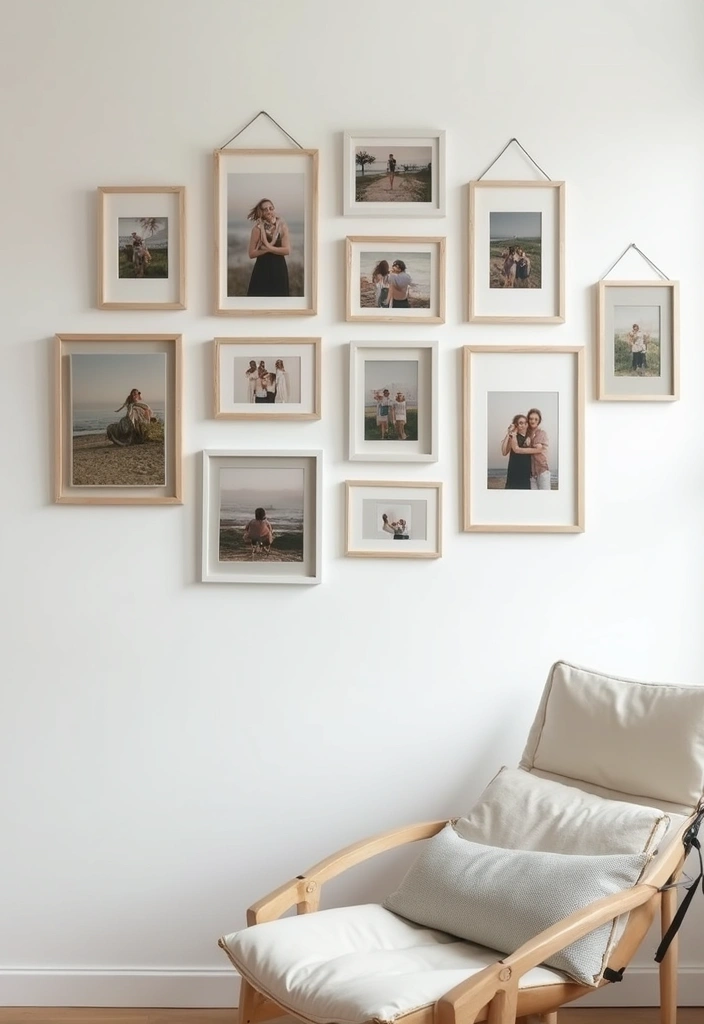
Personal touches can transform a minimalist space into a home that reflects your personality. However, it’s essential to do this thoughtfully to maintain a clean aesthetic.
Here’s how to personalize without clutter:
– Select meaningful items: Choose a few decor pieces that hold sentimental value to you rather than filling up space with knick-knacks.
– Use a gallery wall: Create a dedicated space for personal photos or artwork, limited to a few cohesive pieces that tell your story.
– Keep it functional: Opt for items that serve a purpose, such as a handcrafted vase or a sentimental book displayed on a shelf.
By personalizing your home carefully, you ensure it feels inviting while maintaining minimalism’s core principles.
21. Balance Hard and Soft Elements
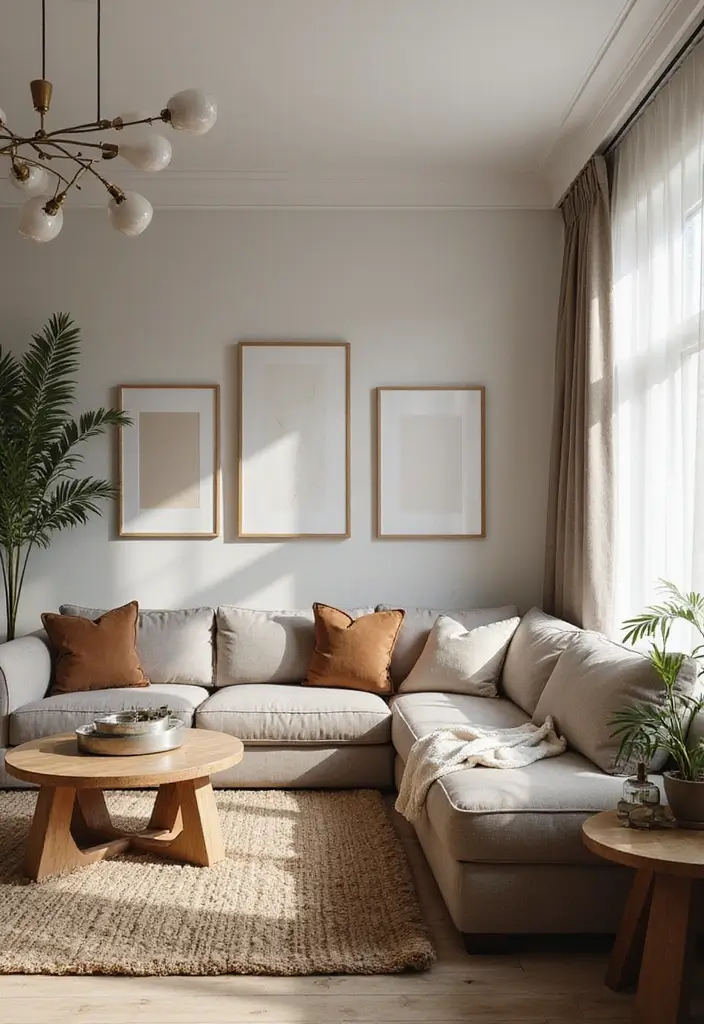
Creating a balance between hard and soft elements in your decor can enhance the overall aesthetic of your minimalist home.
Here’s how to achieve this balance:
– Combine materials: Use soft fabrics like cushions or throws alongside hard surfaces like metal or wood furniture.
– Layer textures: Introduce different textures, such as smooth surfaces paired with plush fabrics, to create warmth and interest.
– Thoughtful arrangement: Position soft items in areas that contrast with harder textures to create visual harmony.
Striking this balance creates a comfortable and inviting environment that feels both modern and cozy.
22. Use Lighting to Set the Mood
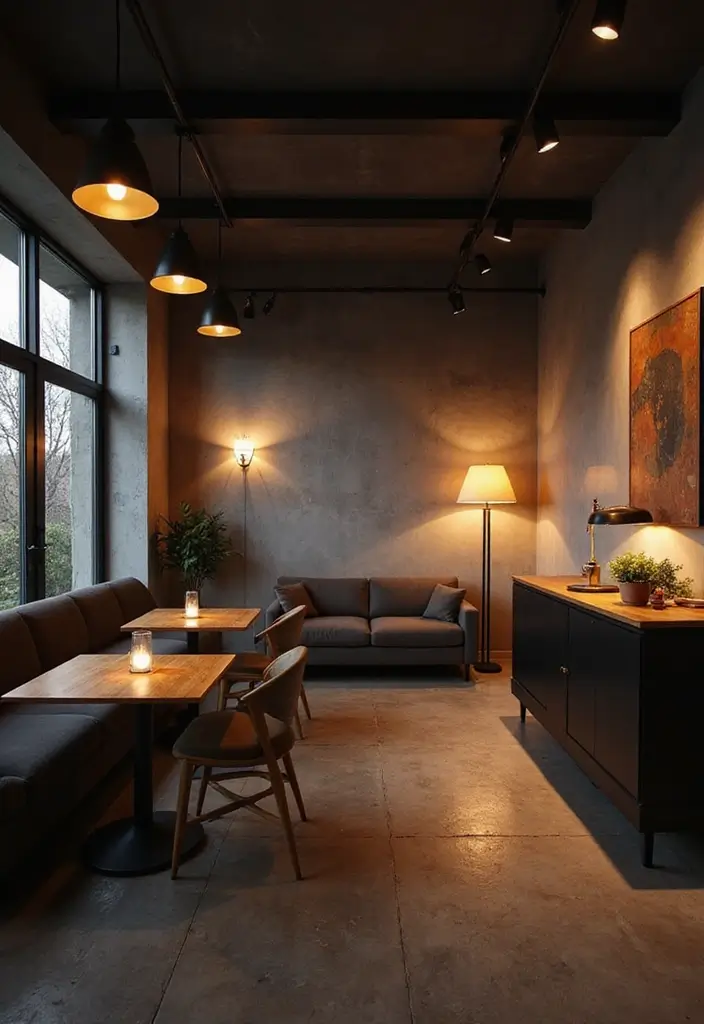
Lighting plays a crucial role in minimalist interior decor, helping to set the mood and highlight your space’s best features.
Consider these lighting ideas:
– Layered lighting: Combine ambient, task, and accent lighting for versatility and atmosphere.
– Natural light: Keep windows clear for maximum natural light during the day, enhancing the open feel.
– Statement fixtures: Choose unique light fixtures that act as decor elements in themselves while providing necessary illumination.
Proper lighting not only enhances functionality but also magnifies the beauty of your minimalist decor.
23. Use Color to Define Zones
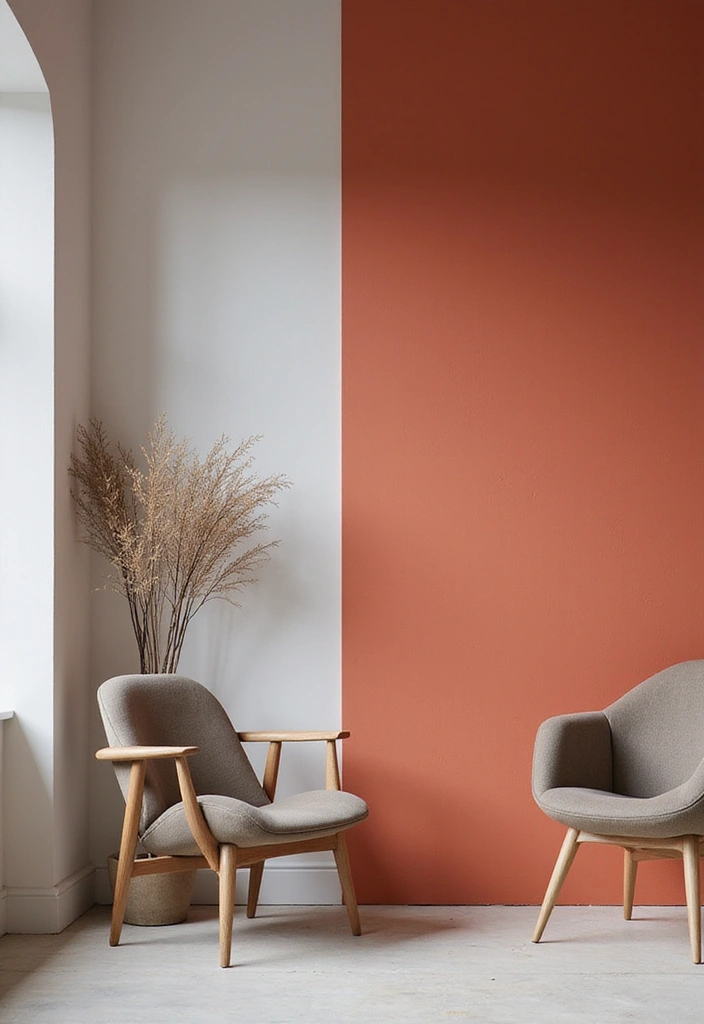
Color can be a powerful tool in minimalist decor when used judiciously. It can help define different areas within an open layout without overwhelming the senses.
Here’s how to use color effectively:
– Accent walls: Consider painting one wall in a bold color to create a focal point within the space.
– Cohesive color schemes: Use shades of the same color to create harmony while still differentiating areas.
– Subtle contrasts: Use slightly varied tones to define spaces without harsh boundaries.
Using color thoughtfully can elevate your minimalist design while enhancing functionality.
24. Combine Old and New
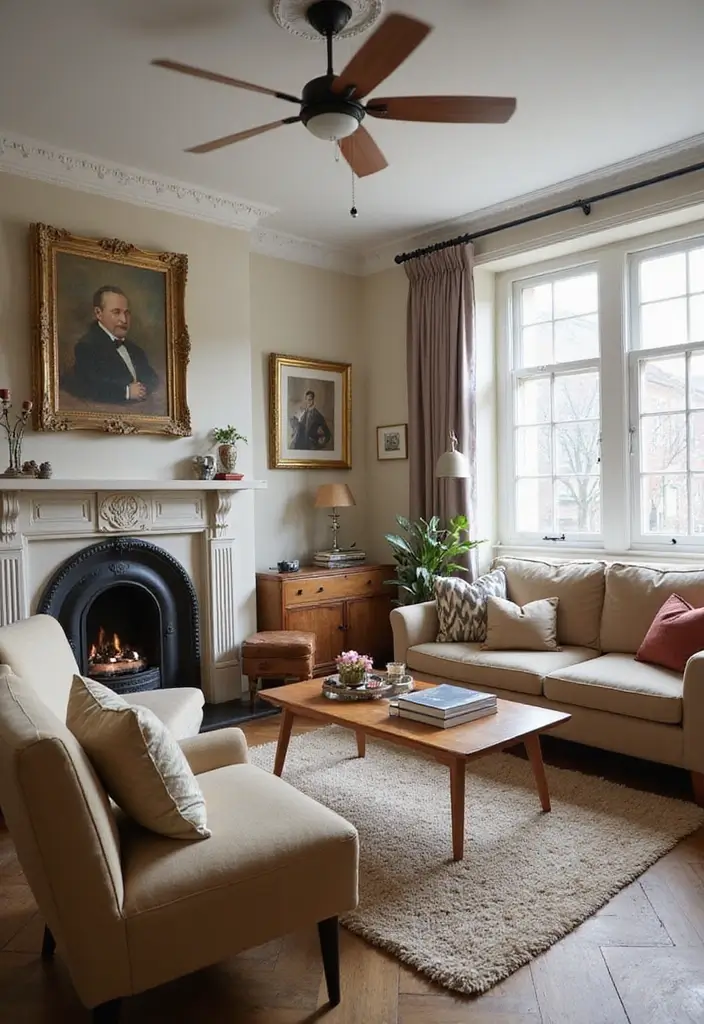
Combining vintage and contemporary elements can create a uniquely minimalist look that tells a story. By thoughtfully integrating old and new, you add depth and character to your space.
Here are some tips:
– Mix materials: Pair a modern sofa with an antique coffee table for an eclectic yet balanced aesthetic.
– Curate carefully: Choose vintage items that resonate with your personal style while fitting into the overall theme.
– Limit items: Ensure that each piece, old or new, serves a purpose to avoid clutter.
The result is a beautifully layered space that feels both inviting and intentional.
25. Choose Lightweight Furniture
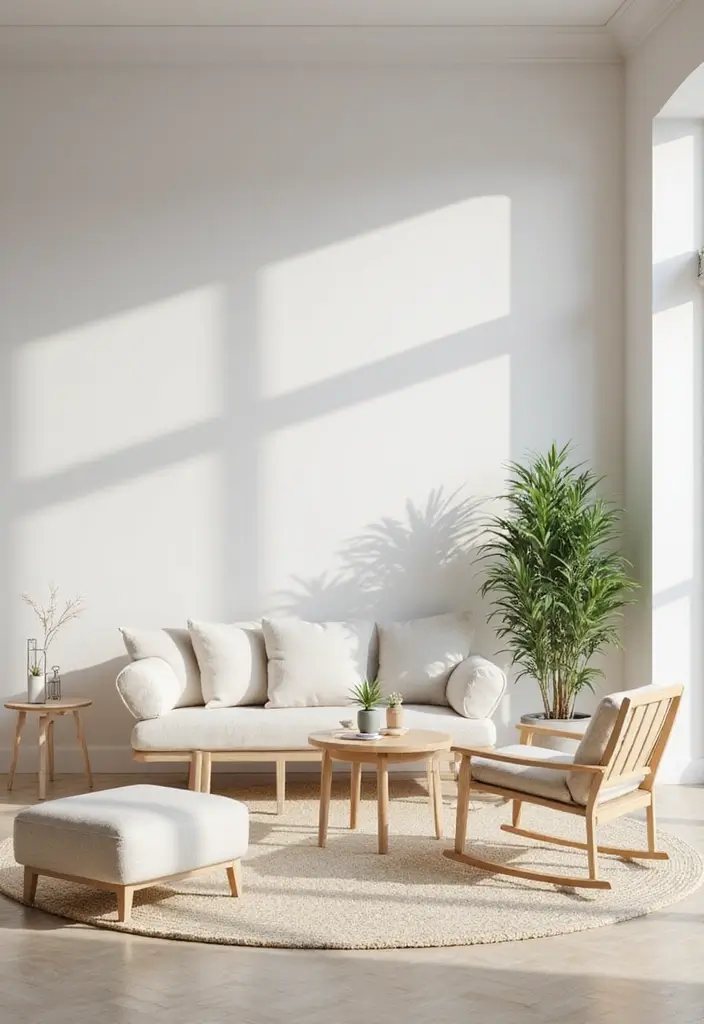
Lightweight furniture is ideal for minimalist decor, allowing you to rearrange your space with ease while maintaining a clean look.
Consider these benefits and tips:
– Mobility: Lightweight pieces make it easier to adapt your space for different needs or occasions.
– Airy feel: Opt for pieces that don’t weigh down the room visually, contributing to an open ambiance.
– Creative arrangements: You can frequently switch up your layout, keeping your space fresh and dynamic.
Lightweight furniture is both practical and stylish, ensuring functionality within your minimalist vision.
26. Use Technology Mindfully
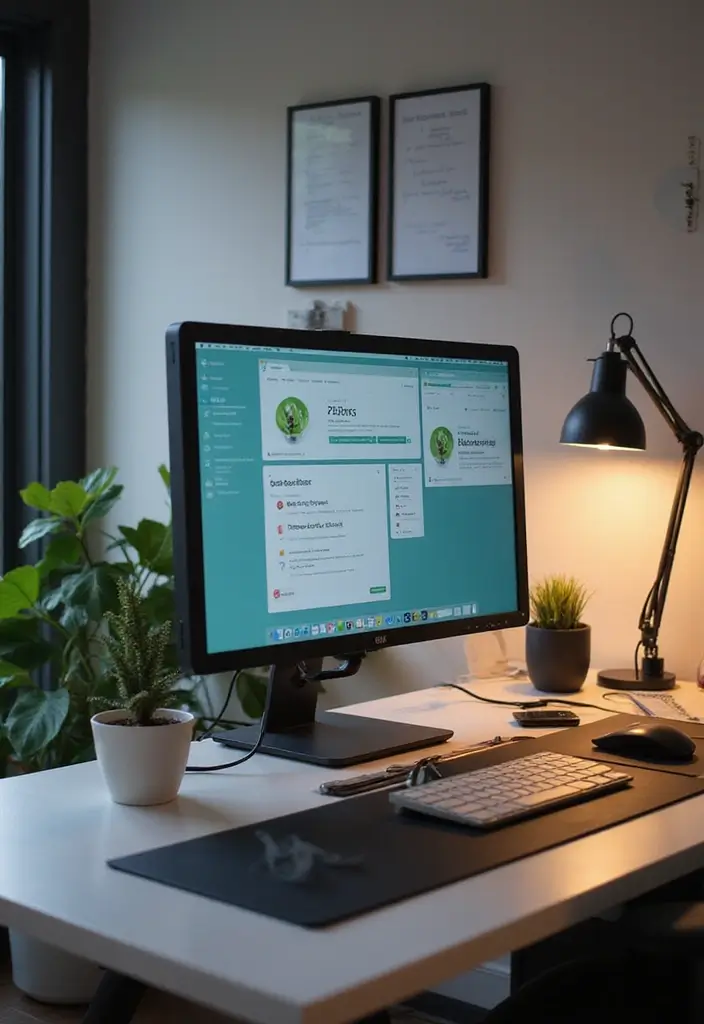
In a minimalist home, technology should enhance your space without creating clutter. Mindful use of tech can contribute to a streamlined aesthetic.
Consider the following tips:
– Integrated solutions: Choose furniture with built-in technology, like smart desks or media centers, to maintain a clean look.
– Hide cords: Use cord management solutions to keep wires out of sight and maintain a tidy appearance.
– Select gadgets wisely: Opt for devices that are functional and aesthetically pleasing, fitting seamlessly into your decor.
By being intentional with technology choices, you can ensure they complement the calm essence of minimalism.
In a minimalist home, technology is your ally. Keep gadgets functional and hidden to achieve a clean, serene space that enhances your life without the clutter!
27. Communicate with Open Design
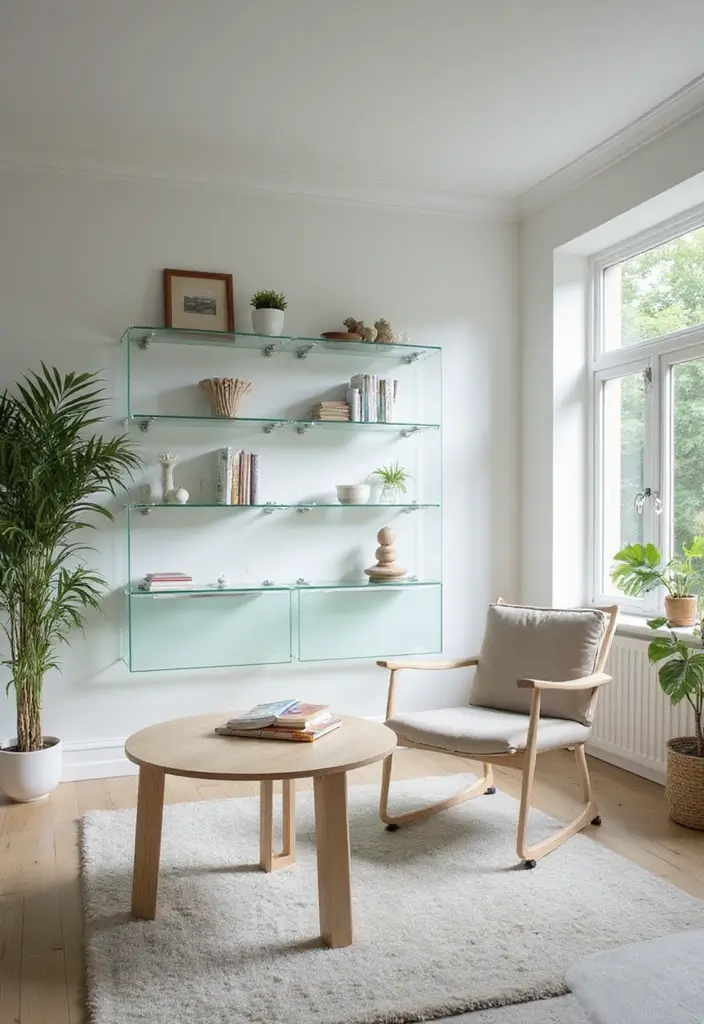
Open design principles extend beyond layout; they also influence how you communicate your style through decor. Emphasizing openness fosters connection and fluidity in your home.
Here are ways to achieve this:
– Transparent materials: Use glass or acrylic furniture to create an airy feel while maintaining visibility.
– Open shelving: Instead of closed cabinets, opt for open shelving to display items while keeping them organized.
– Fluid transitions: Design spaces that flow into one another, maintaining an open feel from room to room.
Open design can create a welcoming environment that encourages movement and interaction.
28. Keep Furniture Levels Consistent
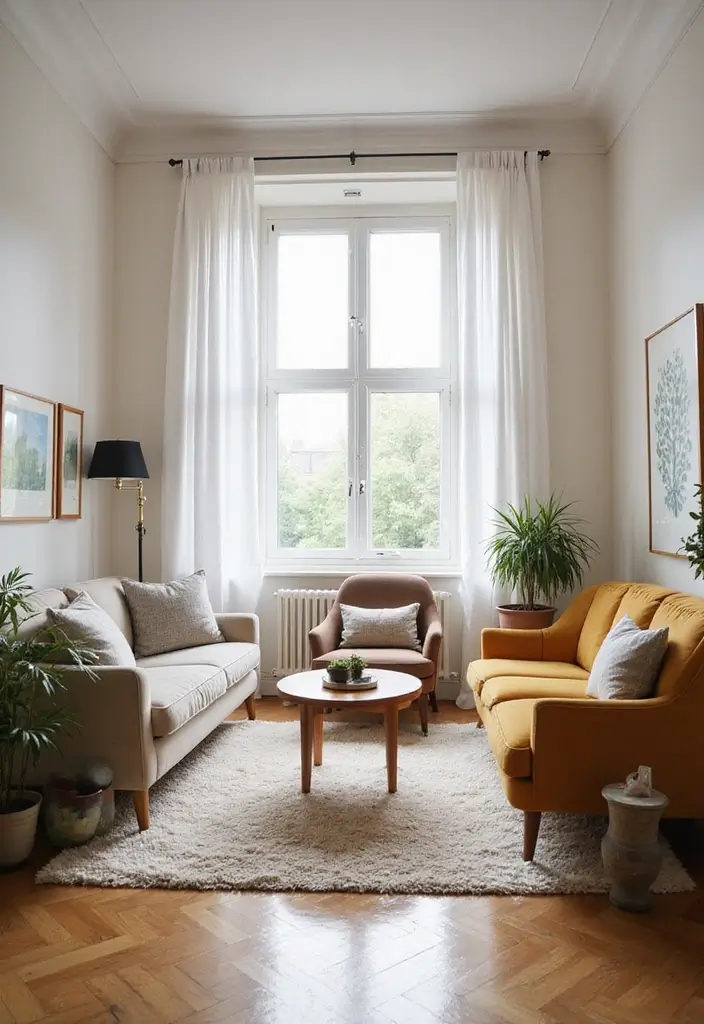
Maintaining consistent furniture levels can enhance the overall flow of your minimalist space. A cohesive look helps unify the design and can make your home feel more expansive.
Consider these ideas:
– Choose similar heights: Use furniture pieces that are visually similar in height to create a streamlined look.
– Avoid extremes: Try to avoid combining overly tall furniture with very low items, which can disrupt visual harmony.
– Balance with decor: Use decor elements to fill in gaps and balance the levels.
Consistency in furniture levels contributes to a polished and professional look.
29. Use Sustainable Lighting Solutions
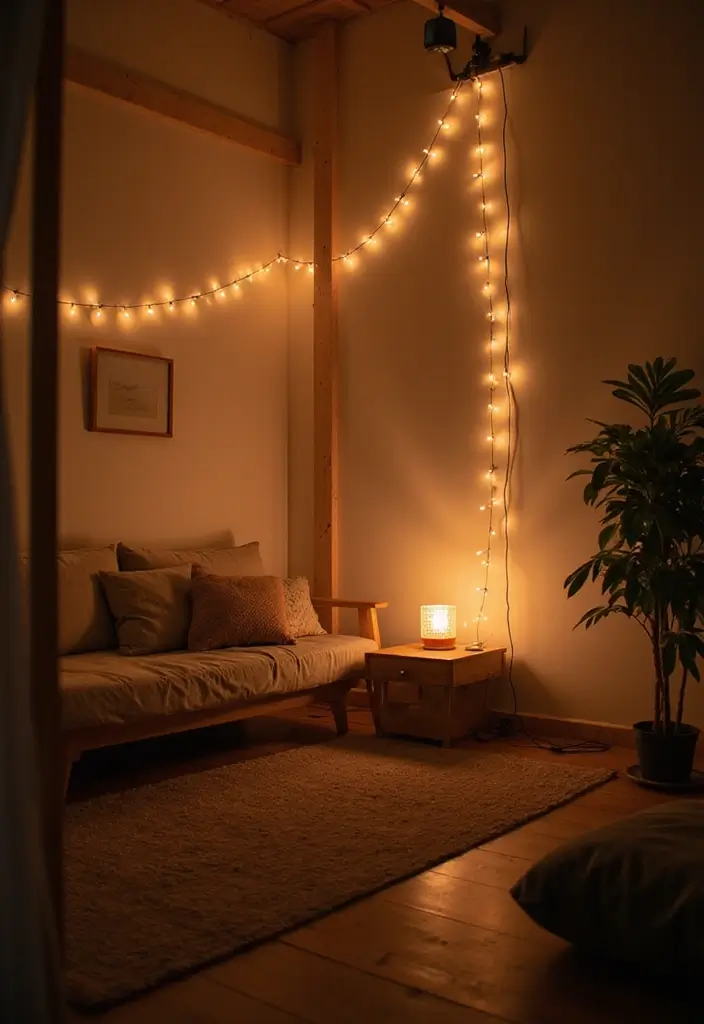
Sustainable lighting is an essential aspect of minimalist interior decor. It not only enhances your design but also aligns with eco-friendly practices.
Consider these sustainable lighting options:
– LED bulbs: Opt for energy-efficient LED bulbs to reduce energy consumption and lower bills.
– Solar-powered lights: Use solar options in outdoor spaces for an eco-conscious touch.
– Dimmer switches: Install dimmer switches to control brightness and conserve energy.
Sustainable lighting solutions can create a warm and inviting atmosphere while reflecting your commitment to responsible living.
30. Celebrate the Beauty of Empty Space
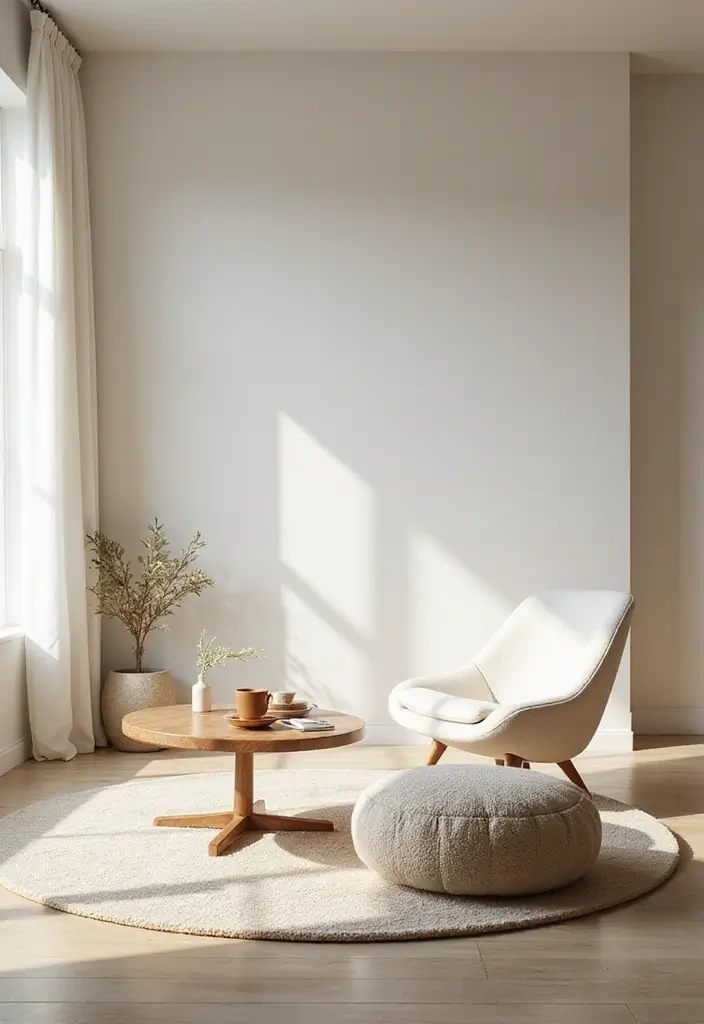
In minimalism, empty space is as important as the items you choose to display. Celebrating negative space encourages a peaceful environment and allows each element to shine.
Here’s how to appreciate empty space:
– Leave areas clear: Resist the urge to fill every corner; allow for breathing room between furniture and decor.
– Embrace simplicity: Focus on fewer items that have significant meaning, creating visual impact without clutter.
– Highlight the architecture: Allow architectural features, such as large windows or beams, to be focal points themselves.
By honoring empty space, you create a serene atmosphere that enhances mindfulness and tranquility.
Embrace the magic of empty space! In minimalist interior decor, less truly is more—allow each cherished piece to breathe and shine in a serene environment.
Conclusion: Embrace Minimalist Living
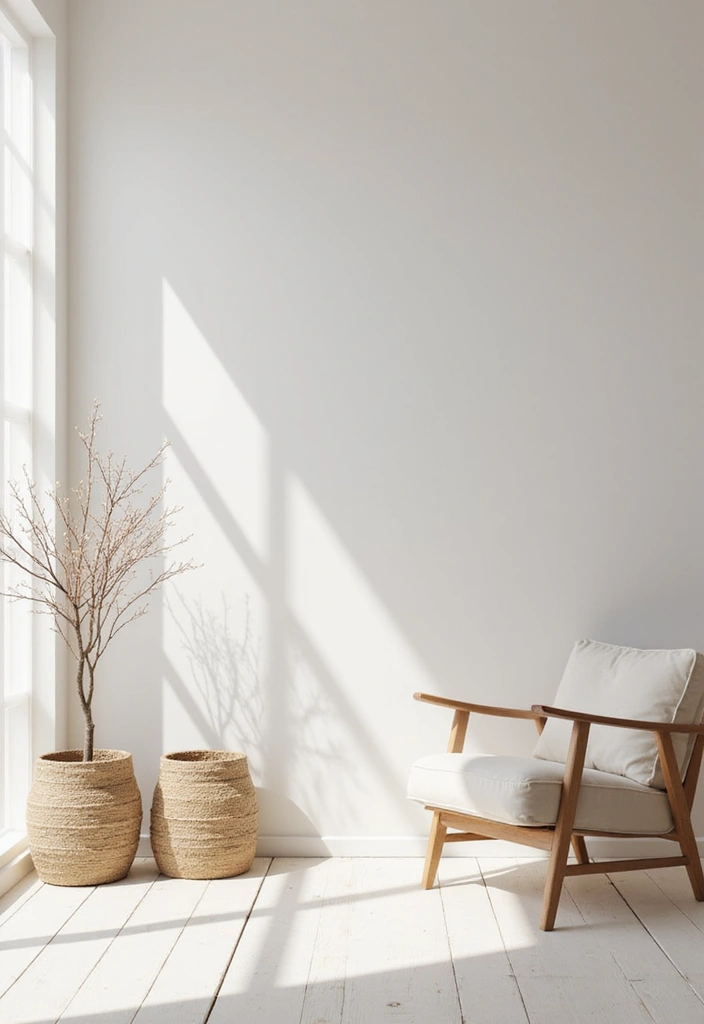
Embracing minimalist interior decor opens the door to a simplified, beautiful life filled with intention and sustainability.
By choosing quality over quantity and emphasizing functional design, you not only create a stunning home but also contribute positively to the environment.
Whether you incorporate a few key ideas from this list or fully commit to a minimalist lifestyle, remember that every small step counts. Let your home reflect your values and your style, and enjoy the peace that comes with living minimally.
Frequently Asked Questions
What Are the Key Principles of Minimalist Interior Decor?
The essence of minimalist interior decor lies in embracing simplicity and functionality. It’s about creating a serene environment with clean lines and a neutral color palette. Focus on choosing quality over quantity, ensuring each piece serves a purpose. By decluttering and opting for multi-functional furniture, you can achieve a stylish, modern look that promotes mindfulness and peace in your home.
How Can I Incorporate Sustainable Practices in My Minimalist Home Design?
Incorporating sustainability into your minimalist home design is a fantastic way to create an eco-friendly space. Choose sustainable materials for furniture and decor, like bamboo or recycled wood. Opt for energy-efficient lighting and consider adding plants to improve air quality. By being mindful about your choices, you can enjoy a beautiful home while respecting the environment.
What Are Some Budget-Friendly Minimalist Furniture Ideas?
Creating a minimalist space doesn’t have to break the bank! Look for minimalist furniture ideas such as second-hand pieces or DIY projects. Consider multifunctional items like a sofa bed or a coffee table with storage. Thrift stores and online marketplaces are treasure troves for finding unique pieces that fit your minimalist aesthetic without overspending!
How Can I Use Color Effectively in Minimalist Decor?
Using color effectively in minimalist interior decor is all about subtlety. Stick to a neutral color palette for a calming effect, and use color sparingly to create focal points. For instance, a single bold artwork or a vibrant accent piece can enhance the space without overwhelming it. Remember, the goal is to maintain a serene atmosphere while still reflecting your personality!
What Role Does Lighting Play in Minimalist Interior Design?
Lighting is a crucial element in minimalist interior design. It can set the mood and highlight the best features of your space. Consider using layered lighting—ambient, task, and accent—to create depth and warmth. Large windows or strategically placed mirrors can maximize natural light, making your minimalist home feel more open and inviting. Don’t underestimate the power of good lighting in enhancing your decor!
Related Topics
minimalist interior decor
sustainable design
modern home accents
simple styling
open floor plans
quality furniture
eco-friendly materials
greenery in decor
multi-functional spaces
neutral color palette
home organization
decluttering tips

